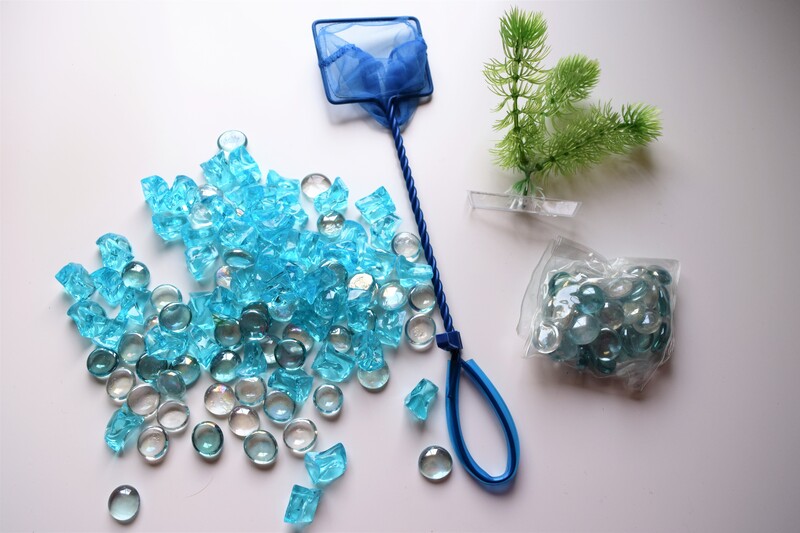Maintain Couch Comfort and Appearance in Long-Term Storage
Your couch is more than just a piece of furniture--it's a centerpiece of comfort and style in your home. But what happens when you need to put your couch into storage for an extended period? Whether you're moving, remodeling, or making space, properly preserving your sofa is crucial to keep it looking and feeling great. This comprehensive guide reveals everything you need to know to maintain couch comfort and appearance in long-term storage.
Why Proper Couch Storage Matters
Many people underestimate the impact of improper storage on couches. Over months or years, even high-end furniture can suffer from issues such as:
- Loss of cushion support
- Fading and discoloration of upholstery
- Mold, mildew, or musty odors
- Damage from pests like rodents or insects
- Structural warping or damage to frames
Taking steps to prevent these problems will ensure your couch remains comfortable and attractive when you're ready to use it again.

Step-By-Step Guide: How to Preserve Couch Comfort and Appearance in Storage
1. Clean Your Couch Thoroughly
Before storing, deep clean your couch to remove hidden dirt, oils, and stains that can set in over time. Grime attracts pests and can cause odors or discoloration during long-term storage.
- Vacuum: Use a vacuum with an upholstery attachment to clean all surfaces--including cushions, corners, and beneath seat pads. Pay special attention to seams where crumbs and dust accumulate.
- Spot-Clean Stains: Treat visible stains using a cleaner appropriate for your upholstery type. Test cleaning solutions on a hidden area to avoid discoloration.
- Professional Cleaning: Consider professional upholstery cleaning for delicate or stubborn fabrics. Steam cleaning can also be highly effective, especially for removing deeply ingrained dirt and bacteria.
2. Disassemble If Possible
Removing detachable parts helps prevent warping, eases transportation, and saves storage space. If your couch allows, carefully unscrew or detach:
- Removable legs
- Pillows or seat cushions
- Loose arms or modular sections
Store cushions and legs separately in labeled bags or containers to protect them and make re-assembly easier later.
3. Protect Upholstery Below Wrapping
Never place plastic or shrink wrap directly on your couch's fabric or leather for long-term storage. Doing so can trap moisture and result in mold, mildew, or material breakdown.
- First, cover your couch with clean, breathable material, such as cotton sheets or moving pads.
- If you need an extra layer of protection, loosely drape stretch plastic wrap or specially designed furniture covers over the sheets.
- Important: Leave enough airflow to prevent condensation, which can harm both cushions and upholstery.
4. Choose the Right Storage Environment
Preserving couch comfort and aesthetics during extended storage depends greatly on selecting an appropriate storage location.
- Climate-Controlled Storage: Whenever possible, opt for a facility offering regulated temperature and humidity. Extremes of heat, cold, or moisture can cause frame warping, crack leather, or foster mold growth in cushions.
- Clean, Dry, and Secure: Ensure the space is dust-free and protected from leaks or pests. Avoid storing couches directly on basement floors or unsealed garages where moisture and pests are common.
5. Elevate and Position Carefully
Placing your couch directly on the floor, especially concrete or tile, exposes it to risks from dampness, cold, and pest infiltration.
- Use wooden pallets, blocks, or risers to elevate your sofa at least 6 inches off the floor.
- Leave space around the couch for air circulation and to prevent accidental bumps or scrapes during retrieval.
- Never stack heavy items on top of your stored couch. This can crush cushions and lead to permanent deformation of padding and fabric.
Special Considerations for Different Upholstery Materials
Fabric Couches
Fabric-upholstered couches are susceptible to dust, fading, and absorbing odors. Always store these with an extra layer of breathable protection. Use silica gel packets or activated charcoal sachets inside cushion bags to help absorb excess moisture and prevent musty smells.
Leather Sofas
Leather requires special care to preserve its signature look and feel. Apply a high-quality leather conditioner before storage to keep the leather supple and prevent cracking. Store away from sunlight, which fades and dries out leather more than other materials.
Microfiber and Synthetic Fabrics
Microfiber's tight weave makes it relatively resistant to dust and spills, but it can develop odors if air can't circulate. Ensure the fabric is fully dry before storing and avoid sealing it airtight for extended periods.
How to Maintain Couch Comfort During Extended Storage
Comfort isn't just about appearance--it's also about how your couch feels when you finally retrieve it.
- Fluff cushions thoroughly before and during storage to help them maintain their shape.
- Store loose cushions separately, laying them flat or upright, not stacked or squashed.
- Place dryer sheets or fabric softener wraps between cushions to ward off static and odors.
- For spring-based couches, avoid standing them on end or at extreme angles, which could distort internal mechanisms over time.
Preparing to Remove Your Couch from Storage
When you're ready to bring your couch back home, take these steps to refresh its comfort and appearance after long-term storage:
- Carefully unwrap all protective coverings. Air out cushions and frames outdoors, weather permitting, to dissipate any residual odors or stale air.
- Vacuum thoroughly and spot-clean again as needed to refresh surfaces and remove any dust or particles accumulated during storage.
- Assess cushioning and support. If cushions have lost volume, gently knead or beat them to redistribute filling. For severely flattened cushions, consider adding new stuffing or seeking professional upholstery assistance.
- Check for any signs of mold, bugs, or damage. Address promptly with appropriate treatments to prevent lasting effects.
Expert Tips to Maintain Couch Comfort and Looks in Storage
- Take photographs before covering or disassembling your couch to make reassembly straightforward.
- Label all components and hardware clearly. This will save time and stress when you're ready to set up your couch again.
- Inspect the storage unit periodically, if possible. Early identification of moisture, pests, or shifting items helps you intervene before serious damage occurs.
- Choose pest deterrents like cedar blocks or natural repellants over harsh chemicals that could affect the couch's fabric or smell.
- Avoid heavy cleaning agents or scented products that might, over time, leave residues or odors embedded in delicate materials.
Common Long-Term Couch Storage Mistakes (and How to Avoid Them!)
To ensure your couch stays comfortable and beautiful while in storage, steer clear of these frequent missteps:
- Storing a damp or unclean couch. Even a hint of moisture can lead to mold or stains that settle in for good.
- Using plastic wrap directly on upholstery. This traps moisture and prevents proper air circulation, risking damages like discoloration and mildew.
- Failing to climate-control your storage space. Unregulated environments subject your couch to extreme fluctuations.
- Cramming other heavy items onto couches. This squashes cushions and can warp structural elements.
- Neglecting periodic inspection. Months of inattention may allow preventable problems to get out of hand.
Bonus: How to Revitalize a Couch After Storage
If your couch has lost some comfort or sparkle post-storage, don't despair! With the right techniques, it's possible to restore much of its original appeal and functionality.
- Freshen With Baking Soda: Lightly sprinkle baking soda over fabric or seat cushions, let sit for 30 minutes, then vacuum. This neutralizes most odors.
- Use a Fabric Refresher: For lingering smells, a gentle fabric spray or diluted white vinegar solution can help.
- Repair Sagging Cushions: Open zippers (if available) and add new stuffing or foam inserts. For most modern couches, this simple upgrade enhances both comfort and support.
- Polish Leather: A quality conditioner and soft cloth will bring back a supple, gleaming finish to leather upholstery.
- Replace Worn Protectors: If your couch had coverings or slipcovers, consider replacing or washing these for an instant facelift.

Frequently Asked Questions: Long-Term Couch Storage
Can I store my couch in a garage or shed?
It's best to avoid uninsulated garages or sheds for long-term couch storage. These environments often experience wild temperature swings and high humidity, which can warp frames and foster mold growth on upholstery. Always opt for a climate-controlled facility when possible.
How do I keep pests away from my stored couch?
Clean your couch thoroughly before storage, avoid storing food or crumbs nearby, and consider natural repellents like cedar blocks or lavender sachets. Inspect regularly for any signs of infestation.
What is the best way to protect couch cushions in storage?
Wrap loose cushions separately in breathable fabric, avoid stacking them, and use moisture-absorbing packets nearby to protect against mildew and odors.
Conclusion: Keep Your Couch Comfortable and Attractive -- No Matter How Long It's Stored
With careful preparation and attention, you can ensure your beloved couch emerges from long-term storage just as comfortable and visually appealing as the day it went in.
- Clean thoroughly before storage
- Disassemble and wrap each component with care
- Opt for a climate-controlled storage space
- Maintain airflow around the sofa, avoid direct plastic contact with upholstery, and periodically inspect for issues
By following these simple yet effective strategies, you'll maintain couch comfort and appearance in long-term storage, preserving both the look and feel of your furniture. When the time comes to enjoy your couch again, you'll appreciate the extra effort invested in its protection.



